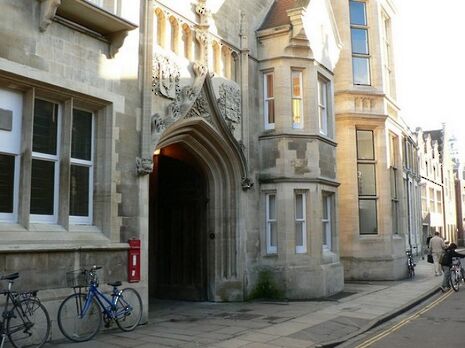Work starts on new Cavendish Laboratory
The building, which will be the third Cambridge Laboratory named after Henry Cavendish, is expected to be completed by 2022

Building work started this month on the new ‘Cavendish III’ Laboratory, which is set to replace the current Cavendish Laboratory on the West Cambridge site.
It will be the third Cambridge laboratory to be named after Henry Cavendish, who discovered hydrogen in 1766.
The opening was marked by Vice Chancellor Stephen Toope, who was joined by guests from the university, construction company Bouygues UK, and members of the local community.
The project is estimated to cost £300 million, and was approved by Cambridge University’s governing council in March 2017. Construction of the main site and shared facilities hub will take approximately three years and should be completed by 2022.
The main 33,000m² site will be named the Ray Dolby Centre and is set to replace existing facilities for the University’s Department of Physics. This will include two lecture theatres, seminar rooms, a learning resource centre, common room and the Cavendish Collection exhibition.
This will be accompanied by a 4700m² shared facilities hub, which will supplement the main building with catering services, as well as teaching, study and library spaces.
The Cavendish III aims to respond to and facilitate developments in modern physics research, with the University’s stating that “the spirit of adventure and innovation will be fostered in the Cavendish tradition, but adapted to the new needs of frontier research.” This will take the form of a “purpose-built centre for [Cambridge’s] world-leading research, bringing all the research groups in the department under one roof to encourage collaboration”.
The project will also look beyond Cambridge, aiming to be a “top-class facility for the nation”, through allowing other institutions access to much of the specialised research equipment which will be housed there.
Part of the funding for this project has been supplied by the government, who announced a £75 million investment in the Cavendish Laboratory as part of its Spending Review in 2015, from the Engineering and Physical Sciences Research Council (EPSRC).
In addition, the family of Ray Dolby, who studied for a PhD in Physics at Cambridge in 1961, announced that they would be donating £85 million towards the Cavendish III in December 2017. £10 million of this will go towards the establishment of a Ray Dolby Research Group at the main site.
The new laboratory will focus on seven main research themes: astrophysics, high energy physics, biological and biomedical physics, energy materials, emergent quantum phenomena, assembly and function of complex systems, and quantum devices and measurements, but aims to encourage collaboration across all of these research areas to foster new advances.
The Cavendish Laboratory already has an impressive history: it is where JJ Thomson discovered the electron, Ernest Rutherford discovered artificial nuclear fission, and James Chadwick discovered the neutron. The lab was also the site of the first experimental proof that E = mc2 under the tenure of Rutherford, and thirty-two of its members have won Nobel Prizes.
The first Cavendish Laboratory was built in 1874 on the New Museums site, under the direction of James Clerk Maxwell, and moved to the West Cambridge site in 1974. The lab is currently led by Professor Andy Parker.
 News / SU reluctantly registers controversial women’s soc18 December 2025
News / SU reluctantly registers controversial women’s soc18 December 2025 Features / Should I stay or should I go? Cambridge students and alumni reflect on how their memories stay with them15 December 2025
Features / Should I stay or should I go? Cambridge students and alumni reflect on how their memories stay with them15 December 2025 News / Dons warn PM about Vet School closure16 December 2025
News / Dons warn PM about Vet School closure16 December 2025 News / Cambridge study finds students learn better with notes than AI13 December 2025
News / Cambridge study finds students learn better with notes than AI13 December 2025 News / Uni registers controversial new women’s society28 November 2025
News / Uni registers controversial new women’s society28 November 2025









